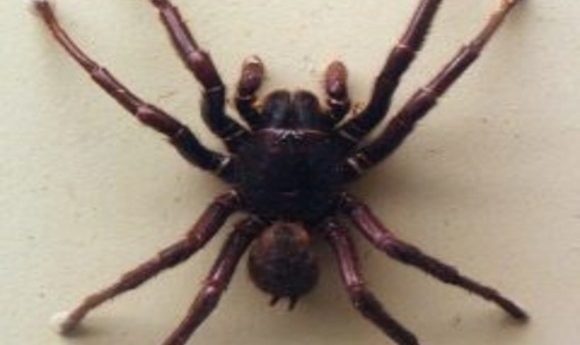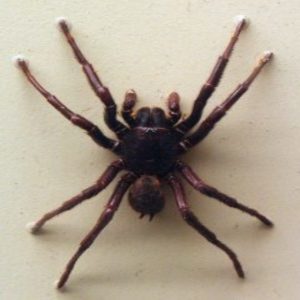Spider venom counters stroke

A peptide found in spider venom may help prevent brain damage after stroke.

Hadronyche infensa, the Darling Downs funnel-web spider.
Credit: Wikimedia
They may be the stuff of childhood nightmares, but when it comes to treating neurological damage following a severe stroke, a certain group of Australian venomous spiders could soon become our best friends, a new study suggests.
Strokes kill nearly six million people worldwide each year, and leave a further five million disabled. Survivors often need extensive care for the rest of their lives, making stroke one of the most economically expensive diseases in the modern world. For the fifteen million men and women who suffer a stroke each year, the avenues of treatment are highly limited, and the time window for preventing severe brain damage is woefully short.
While several neuroprotective drugs have shown promise in preclinical trials, Roger Simon from Morehouse School of Medicine, who was not involved in the new study, suggested that the short time window for treatment limits the effectiveness of the drugs in humans. “There are over a thousand of these neuroprotective compounds that have been tried in lab and maybe a couple of hundred have actually been tried in humans,” he said. There are currently no approved drugs for treating the neuronal damage that results from stroke.
Strokes occur when the brain cannot obtain sufficient oxygen, either because a blood vessel is blocked (ischemic stroke) or because one is ruptured (hemorrhagic stroke). The unoxygenated parts of the brain suffer permanent damage because of widespread neuronal death.
Researchers believe that this rapid cell death is promoted by a sharp drop in brain pH following stroke. An ion channel, known as acid sensing ion channel 1a (ASIC1a) is critical for sensing this drop in pH and leading cells into programmed cell death.
Glenn King and colleagues at the University of Queensland, Australia were investigating small molecule inhibitors of this ion channel when they chanced upon the sequence of a peptide present in the venom glands of an Australian funnel-web spider—a peptide that bore a marked resemblance to one of the ASIC1a inhibitors the lab was studying. “It was quite a serendipitous discovery,” said King.
The researchers named this peptide Hi1a and demonstrated that in its pure form, Hi1a is a highly effective inhibitor of ASIC1a. It is, in fact, the most potent such inhibitor described to date.
Encouraged by Hi1a’s ability to block ASIC1a and prevent neuronal damage in cultured neurons, King and colleagues decided to administer this drug to rats undergoing an experimental model of stroke. Interestingly, Hi1a was not only able to protect the brain of these rats from neurological damage after stroke, it did so even when administered 8 hours after stroke onset without any serious side effects.
Simon, whose lab first described the critical role of ASIC1a in neuronal damage following stroke and demonstrated the use of a tarantula venom for inhibiting the same, is hopeful regarding the future of drug therapeutics targeting acid sensing ion channels for the treatment of stroke.
Meanwhile, King and colleagues are experimenting to see whether Hi1a can act as a general purpose neuroprotectant in other models of nervous tissue damage, such as spinal cord injury or heart attacks.
“We have good reason to believe the channel is activated by any ischemic injury,” said King, “I think there may be wider uses of these drugs.”